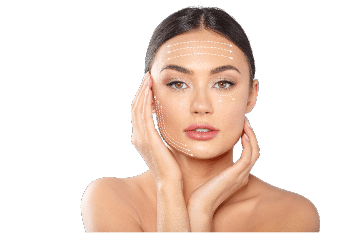Cellulite is one of those aesthetic concerns that often complicates our relationships with our bodies, altering our perceptions of self-image as we compare those lumps and bumps to flawlessly edited photos across social media and advertising. While there has recently been a movement to love the skin we’re in, cellulite included, misleading information regarding its causes and treatments continue to spread, leading to further confusion and concern. Next time you’re grappling to understand your cellulite and the treatments available to you, recall the following five facts no one ever tells you about cellulite and set the record straight.
Cellulite Is Incredibly Natural and Normal
You’re used to seeing your body in a certain way, but when we begin to look at cellulite on an anatomical level, it’s as natural as smooth, firm skin. Essentially, it comes down to the structure of collagen and elastin fiber bands and the fat cells that fall beneath them. In females, these bands of connective tissue appear as a wide-spaced grid, while they appear more like smaller crisscrosses, similar to a chain link fence, in males. Often, this means that in females, as fat cells accumulate under the connective bands, they are less contained and push through the bands, resulting in fat pockets appearing on the surface as lumps and bumps. Estrogen also plays a role in collagen degradation, which further exacerbates the issue.
There Isn’t Just One Type of Cellulite
You’re used to seeing your body as normal, but when we start looking at cellulite on an anatomical level, it’s as natural as smooth, firm skin. Actually, cellulite goes back to the structure of collagen and elastin fiber bands and fat cells that fall under them. In women, these bands of connective tissue appear as a widely spaced network, while in men they look more like smaller intersections, similar to a chain-link fence. Often, this means that in women, as fat cells accumulate under the connective bands, they become less secure and push through the bands, resulting in pockets of fat appearing as lumps and bumps on the surface. Estrogen also plays a role in collagen degradation, which exacerbates this issue.
There is no way to escape the genetic factor
Genetics seem to play a big role in determining whether you get cellulite, although there are still other factors involved that can increase or decrease – but not eliminate – your hereditary risk level. In other words, if your parents had or have cellulite, the trait has been passed down to you. While you can try to minimize its appearance, nothing can help you avoid the hereditary factor here.
Cellulite appears mostly in the thighs and buttocks
While it’s certainly more common to see cellulite in areas like the thighs and buttocks, where the skin is naturally thinner and women’s body fat accumulates in these areas, cellulite can technically appear in any area where circulation is restricted. is to be created Maintaining the appearance of cellulite is a constant balance between maintaining firm and elastic skin and limiting the accumulation of fat cells. If blood circulation to an area is reduced, the skin cannot properly support its natural levels of collagen and elastin production, weakening its structure and opening the way for fat cells that lead to cellulite. In addition to the thighs and buttocks, some other common areas where cellulite may appear—although it’s worth noting that it can technically occur anywhere—are the buttocks, lower abdomen, arms, breasts, and chest.
Topical treatments alone are not an effective treatment
While there are simple treatments to make cellulite look better, you should be looking for more long-term solutions. Creams, serums, and topical treatments are often used to treat any skin concern, including cellulite. Paying attention to the active ingredients in creams can help prevent people from wasting money on unsubstantiated claims, but for long-term results, a topical cream alone probably won’t do the trick and you’ll have to turn to other treatments.
Instead, reducing the appearance of cellulite may be best approached by following a healthy, active lifestyle enhanced by cellulite reduction treatments and effective, science-backed skin care solutions. Specifically, non-surgical cellulite reduction treatments use advanced energy-based technology to deliver heat therapy deep within the skin’s surface, transforming it from the inside out. Targeted thermal energy helps break down underlying fat cells while stimulating the skin’s natural collagen production levels to combat the effects of estrogen, aging and more. The result is a visible improvement in the appearance of bumps and depressions for smoother, firmer skin. For even better results

